In the downy mildew year of 2021, this is a very good performance, without any use of chemical pesticides. The vines and the soil were treated only with compost tea and effective microorganisms (EM) in October of the previous year and in April of this year.
The entire area of the vineyard is naturally green and the grass was mowed twice in the summer. The cuttings were treated with EM to promote life in the soil. During a spade diagnosis (below), viticulture technician Josef Engelhart, who has looked after this vineyard from the start, found that the soil is very loose and deeply rooted up to a depth of 30cm. “There are many earthworms present. The ground smells of fresh herbs and forest soil,” he says.

The 10-acre hobby vineyard was planted in 2017 and treated with EM from then on. In the first few years, Jürgen occasionally used network sulphur as an ecological crop protection agent in the summer. Since 2020, however, only compost tea and EM have been put on the vines and the soil. The vineyard is therefore 100% probiotic. The microorganisms of the compost tea (about 500 in number) and the EM (approximately 80) enliven the plants and the soil and create a good environment in the vineyard. As a result, the powdery mildew fungi cannot spread to the vine leaves and grapes in a highly damaging manner. The natural resistance to fungi of the PIWI grape variety is supported by the promotion of the “living soil/plant” system.
At the end of August, only the tips of the shoots at the top of the vines were infected with 30% dried downy mildew.
Jürgen, an expert on microorganisms and founder of Eußenheimer Manufaktur, treats his vineyard immediately after the harvest with compost tea, which he makes himself and also sells to other winemakers, and again in the spring with EM, which hit the ground as bokashi, as well as compost and primary rock flour.
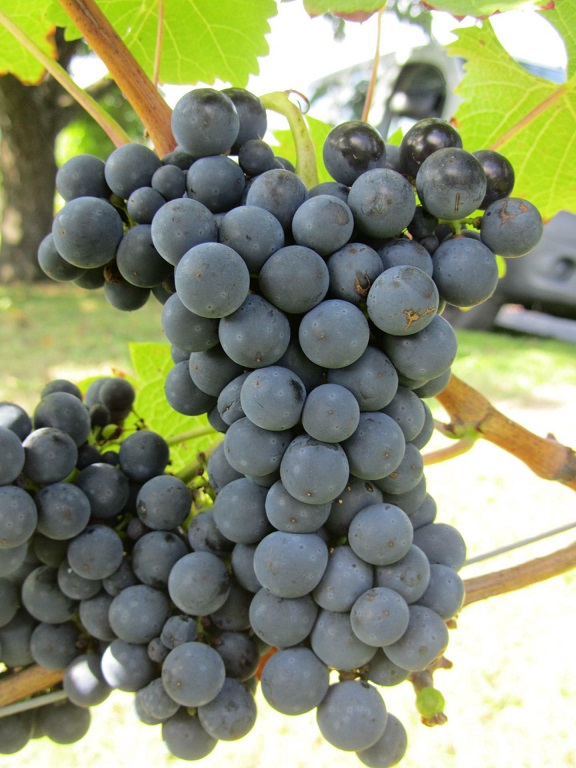
The Freiburg-bred Cabernet Cortis (above) has a complicated parentage: Cabernet Sauvignon X (Merzling X (Zarya Severa X Muskat Ottonel)). It is said to retain its spicy, intense Cabernet flavours and aromas and colour. It is also very rich in extract and phenols while having good resistance to powdery and downy mildew.
The most promising PIWI grapes (so far)
The new wave of PIWIs, created through several stages of crossing, contain high percentages of Vitis vinifera and just enough disease-resistant American Vitis to give good resistance to fungal diseases. Therefore, they taste more like the Vitis vinifera in their family tree. Souvignier Gris has some Riesling and Traminer characteristics; Johanniter also reminds some of Riesling; Cabernet Blanc has traits of Cabernet Sauvignon; Muscaris and Blütenmuskateller are obviously from the muscat family.As the quality of these grapes and demand for sustainable viticulture increases, more and more regional governing bodies are permitting the planting of PIWIs.
Here are the PIWIs that we think are worth considering for future plantings, with much of the information coming from PIWI International, an organisation responsible for promoting such varieties.
PIWI, by the way, is short for PilzWiderstandsfähig, a German term for vine varieties that have been described previously as hybrids, direct producers, interspecific, disease-resistant or disease-tolerant.
They all have similar advantages and disadvantages…
Advantages
- Much less spraying to protect the plant from the major fungal diseases of powdery and downy mildew – which is more sustainable and a substantial cost saving (on chemicals, fuel, machinery and labour).
- Less spraying means less soil compaction, and more microorganisms in the soil.
- Steep slope cultivation by tractors is much safer because there is less need for plant protection measures in every soil condition (eg. when the ground is wet and slippery).
- They have higher yields than most cool climate Vitis vinifera varieties, because more of the grapes are viable.
- They offer something new and exciting – and sustainable.
- They make it easier to be organic and biodynamic in cool climates.
- Many are great for low intervention and natural wines.
- They allow the production of red wines in cool climates.
- With high yields, early picking dates, high acidity and neutral flavours, many are highly suitable for the production of sparkling wines.
- Many of the newer PIWIs have marketable names – Sauvignac, Souvignier Gris, Muscaris, Pinotin, Cabernet Noir, Cabernet Jura…
Disadvantages
- There is a bias against non-Vitis vinifera varieties.
- Many PIWIs have strange, unfamiliar names. “Selling is quite difficult at the beginning,” Wolfgang Renner, chairman of PIWI Austria, tells me. “Variety names are not always well chosen.” He cites Bronner and Regent as examples of this.
- PIWIs have been around for decades, but the early creations produced bland wines that gave hybrids a poor name. Negative perceptions remain.
PIWIs from France
In France, four French PIWI varieties (Artaban, Vidoc, Floreal and Voltis) have been classified as Vitis vinifera L, clearing the way for a possible classification as AOC wine, and the Institut National de la Recherche Agronomique (INRA) has a programme to breed multi-resistant varieties with a strong local character by 2030. Even Champagne is getting in on the act. It has approved the planting of up to 5% Voltis, and seedlings with resistance genes have been planted in experimental vineyards and will be observed over the coming years.Artaban. A crossing of Mtp 3082-1-42 and Regent, it makes light, fresh reds, with aromas characterised by fruit notes. Polygenic resistance to oidium and peronospera.
Voltis. These white grapes, from the crossing of Villaris X Mtp 3159-2-12, produce wines that are fragrant, smooth, wide and persistent as long as the yield is limited. When the yield is high, the must weight from these vigorous vines is weak and the acidity is high.
Made in Germany
PIWIs have been gaining momentum in Germany for a long time. The cultivation area is around 2.5%, which corresponds to about 2,500ha. The PIWI Deutschland eV association, which promotes awareness of PIWIs in the country, makes it clear that quality and enjoyment can be reconciled with sustainability, ecology and biodiversity.Muscaris. From a crossing of Solaris and Muscat, this white grape produces intensely scented, nutmeg and citrus aromas with some smoky notes. It has a strong, full-bodied taste, with intense acidity and 15-20°Oe more must weight than muscatel. Very high resistance to downy mildew, sufficient against powdery.
Souvignier Gris. A pink-skinned grape from a crossing of Seyval Blanc and Zähringer, which is a crossing of Riesling and Traminer. That could explain the stone fruit aromas in Souvignier Gris wines. It also has very good resistance to downy mildew and oidium. Hardy due to late berry ripeness, loose berries and thick berry skins (which make it suitable for skin-contact wines).
Canopy's editor, Chris Boiling, is making an amber blend from Muscaris and Souvignier Gris as part of his 'crazy #harvest2022 adventure', which involved making eight wines in four countries in one vintage. You can read about his PIWI wine here and here.

Monarch (above). This red grape – from (Merzling X (Zarya Severa X Muskat Ottonel)) X Dornfelder – produces wines described as “fruity, intense colour, rich in extract and phenol, Romanesque type” by PIWI International.
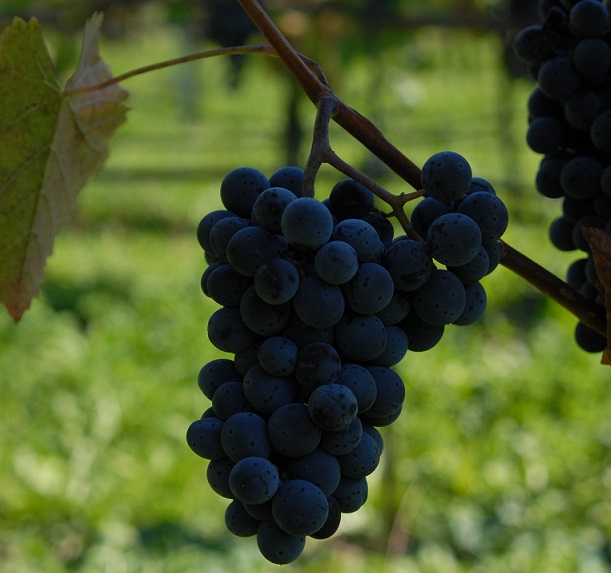
Prior (above). Another red with a complicated heritage: (Joan Seyve 234-16 X Bl. Pinot Noir) X (Merzling X (Zarya Severa X St Laurent)). But the result is “very similar to Pinot Noir”, according to PIWI International. It ripens about a week later than Pinot Noir and has very good resistance to powdery and downy mildew.
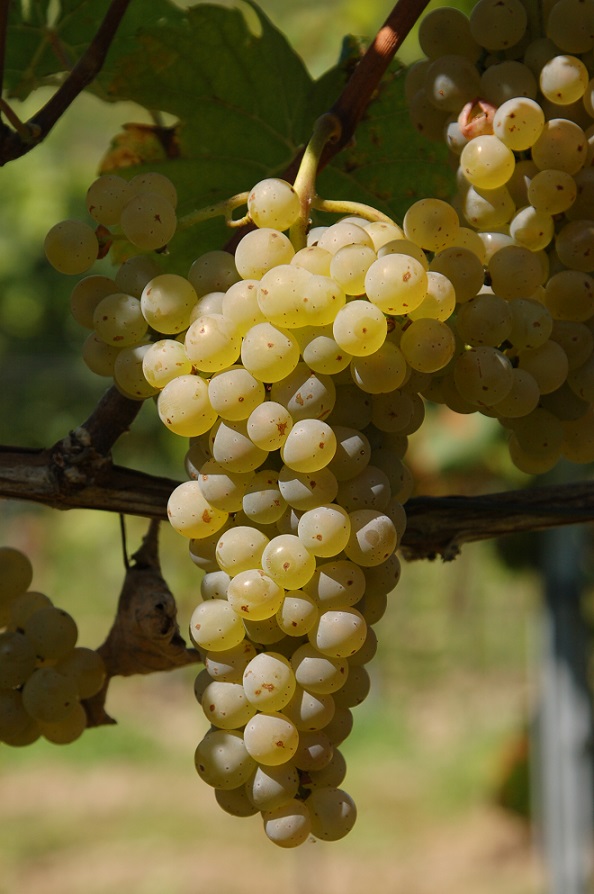
Bronner (above). Producing a white wine that’s said to be similar to a Pinot Blanc if the yields are watched, it ripens 7-10 days later. From the crossing of Merzling X (Zarya Severa X Saint-Laurent), it has very high resistance to oidium and peronospera. Berries ripen medium to late.
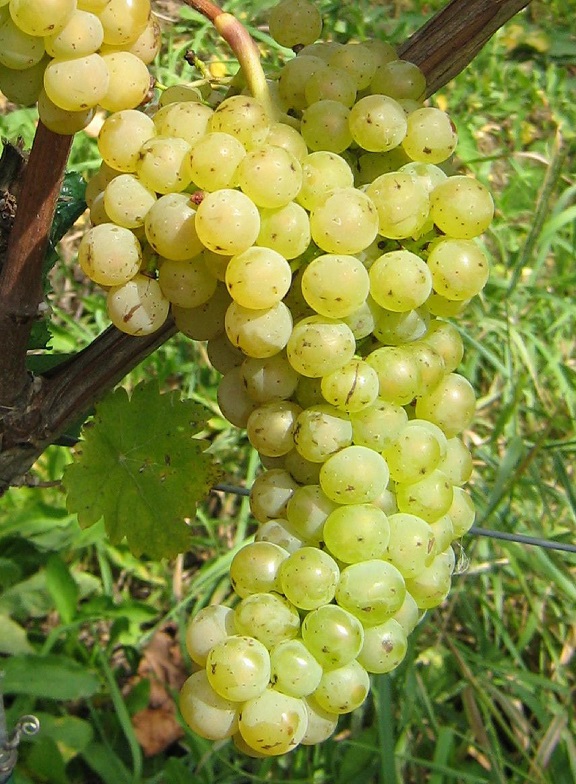
Johanniter (above). This white grape – a crossing of Riesling X (Seyve-Villard 12-481 X (Ruländer X Gutedel)) – produces wines that are said to be “strong, fresh and fruity” like Pinot Blanc and Riesling. It is also “a good terroir indicator”, according to PIWI International. High resistance to powdery and downy mildew.
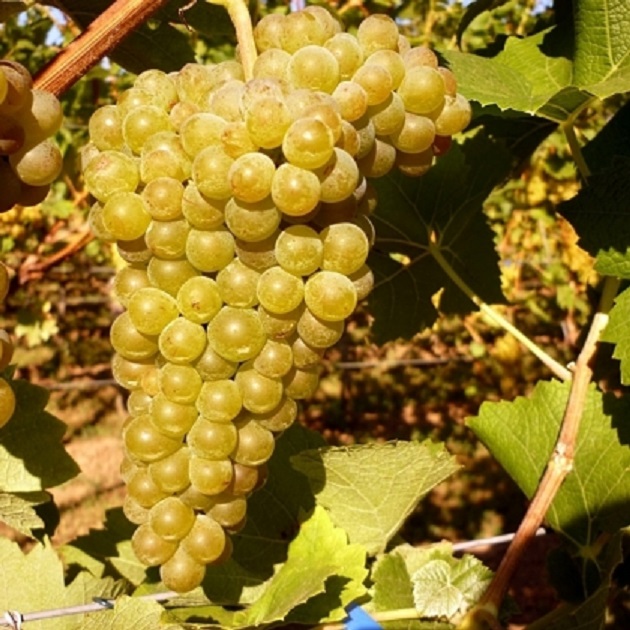
Solaris (above). A crossing of Merzling X (Saperavi severnyi X Muscat Ottonel), this white grape produces wines with a fruity bouquet, reminiscent of pineapple and hazelnut. Ripens early with high sugar content – which wasps love – and good acidity. Adds weight and alcohol to cool-climate blends but it also suitable for sweet or dessert wines. High resistance to powdery and downy mildew.
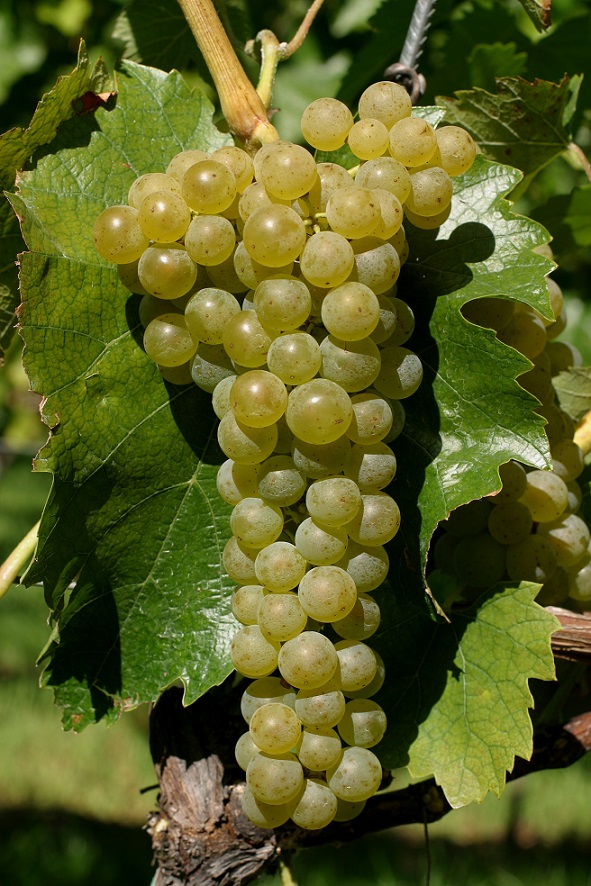
Felicia (above). A high-yielding cross between the resistant varieties Sirius and Vidal Blanc, its bouquet is characterised by floral aromas, which in some years are combined with a subtle, pleasant muscat tone. Late-ripening with balanced acidity, it has large loose bunches with medium-sized, golden yellow berries. In addition to moderate resistance to powdery mildew and downy mildew, the variety is also resistant to black rot. But it is “quite insensitive” to botrytis. In the vineyard, Felicia can be recognised by its strikingly shiny leaves. (Photo courtesy Julius Kühn-Institut, German Research Center for Cultivated Plants)
Swiss four
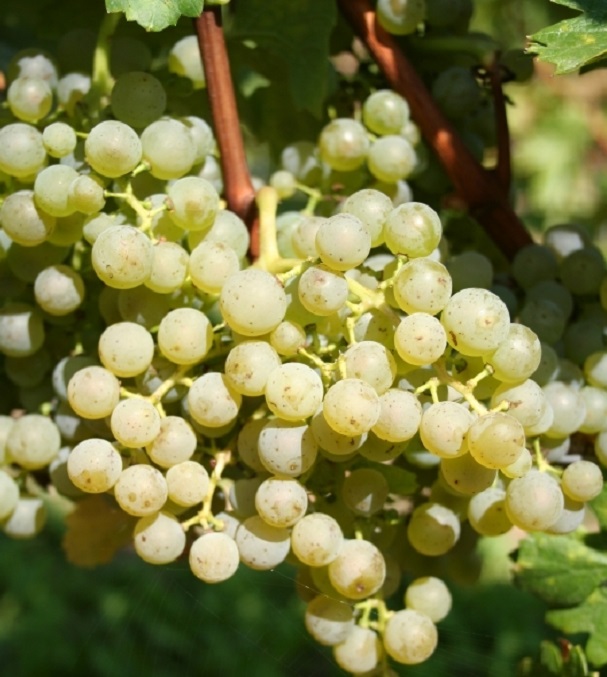
Cabernet Blanc (above). When I tasted this a decade ago, it made me change my mind about the potential of fungus-resistant grapes for producing quality wines. A crossing of Cabernet Sauvignon and several mildew-resistant varieties, the white wine has spicy, black fruit notes reminiscent of Cabernet Sauvignon.
Cabernet Jura. A red grape from a crossing of Cabernet Sauvignon and a disease-resistant partner, it produces wines with “very dark, ruby red colour, nice tannins”, according to PIWI International. Fruit aromas such as berries, cherries, and plums combine with a rose scent which can be dialled up or down depending on the pressing time. It is also recommended for adding colour to a red blend. Very resistant to botrytis.
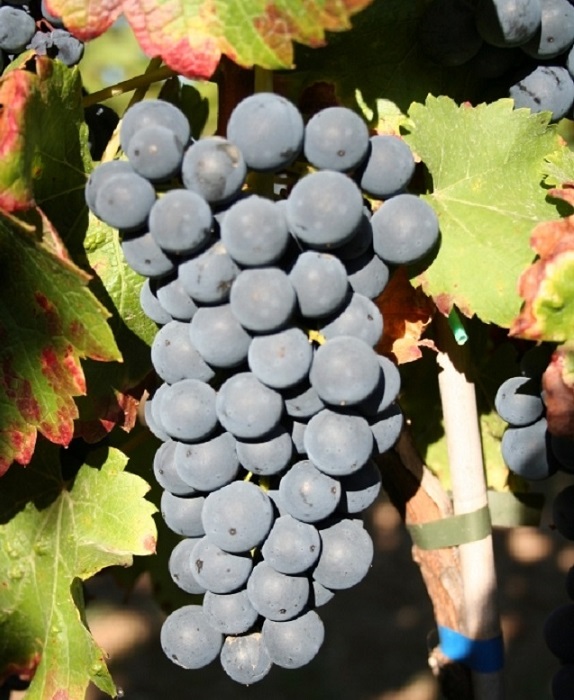
Pinotin (above). A complex cross of Cabernet Sauvignon X (Silvaner X (Riesling X Vitis vinifera) X (JS 12417 X Chancellor)), the result is reminiscent of Pinot Noir, but it appears in the glass with more colour density and depth. It shows a clear, dense forest fruit aroma, soft tannins and straightforward, accessible flavours. The round, medium-sized berries, which are covered with an even waxy layer, have very good resistance to oidium, botrytis and good resistance to peronospora. Also, since it sprouts relatively late, there is little risk of late frosts.
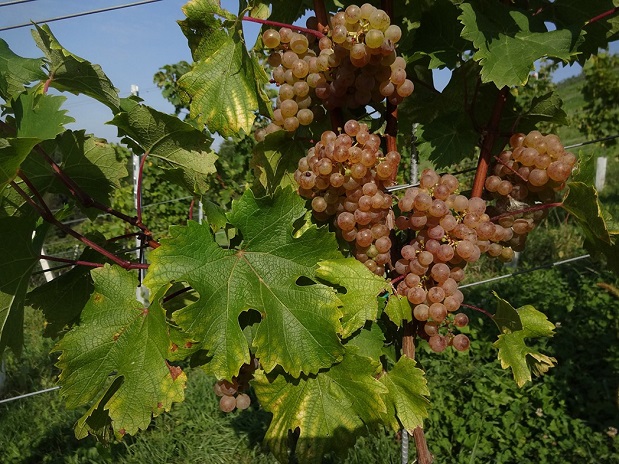
Sauvignac (above). Depending on the degree of maturity, the style of expansion and the use of yeast, this white variety leans towards Riesling aromas of apricot and ripe apple or shows the bouquet of limes and subtle blackcurrant of Scheurebe. It is characterised by a stable acidity that remains alive both when the grapes ripen on the vine and when the bottles age. A crossing of Sauvignon Blanc X Riesling X resistance partners, it ripens about ten days earlier than Riesling. The variety also shows very good resistance to peronospera and oidium among the extreme weather conditions in Switzerland. Against botrytis, the variety is very solid due to the loosened stem structure and the thick berry skin, but there is some evidence that it has noble rot potential from about 100°Oe, without the berries bursting open.
From Italy
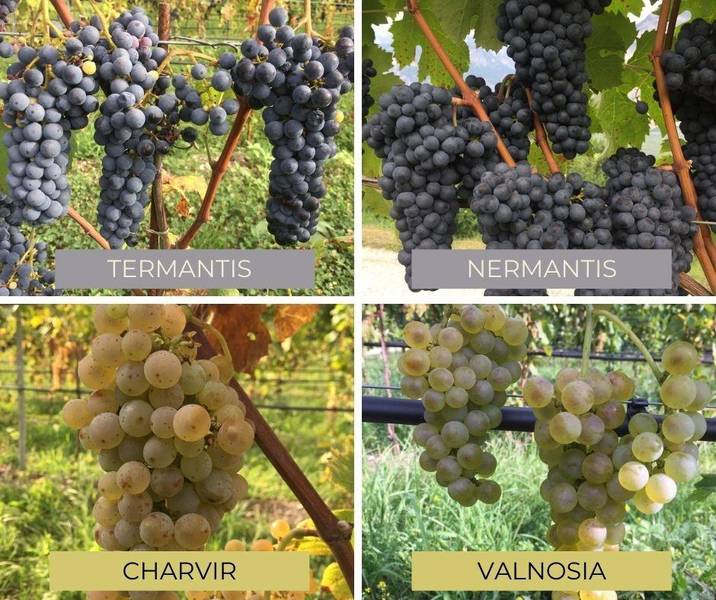
In Italy, four varieties (F22P9, F22P10, F23P65, F26P92) from the Fondazione Edmund Mach have been added to the national variety list. In Trentino, the VEVIR project is researching the potential of seven varieties (Nermantis, Termantis, Valnosia, Charvir, Solaris, Souvignier Gris and Pinot Regina). Four of these (Termantis, Nermantis, Charvir, Valnosia, above) have emerged from the Fondazione Edmund Mach’s genetic improvement programme.
In Emilia-Romagna, nine new grape varieties have been added to the regional register after field tests by the Research Center for Crop Production. They are the reds Merlot Kanthus, Merlot Khorus, Cabernet Volos, Cabernet Eidos, and the whites Sauvignon Kretos, Sauvignon Rytos, Johanniter, Souvignier Gris and Solaris. But they cannot be used in DOC wines.
Soreli. Friulano X 20/3, it resembles its parent Friulano. Sugar accumulation is excellent and the acid is within the average limits even in hot years. The aromatic profile is intense and includes tropical notes such as pineapple and passionfruit. Excellent resistance to downy mildew and good-to-excellent resistance to powdery mildew. Reduced sensitivity to botrytis and acid rot. A suitable blending partner with Fleurtai.
Fleurtai. Another crossing from Friulano X 20/3, this white variety has good sugar storage capacity and average acidity. The aromatic profile shows a good intensity of free aromas with clear notes of white flowers and glycosides with pear and almond notes, which are typical of Friulano. The full-bodied taste is mainly due to the fruity and spicy aromas, which have been highly appreciated during sensory analysis. Suitable for the production of young wines, it has excellent resistance to downy and powdery mildew. Reduced sensitivity to botrytis.
Merlot Khorus. This early-ripening red grape variety – Merlot X Kozma 20-3 – has very good resistance to downy mildew and good resistance to powdery mildew. Responds to sensitive botrytis and acid rot. The grapevine is able to achieve good sugar accumulation with average must acidity. The aromatic profile shows clear notes of red fruits; excellent polyphenol content in terms of intensity; the high anthocyanin content and the quality of the tannins. The wines have an intense ruby red colour, slightly violet, with good structure and body; and are well suited for a medium to long ageing time. The same parents also produced Merlot Kanthus.
From Austria
Three white PIWIs have recently been approved for use in Austrian Qualitätswein (quality wine). They are Blütenmuskateller, Muscaris and Souvignier Gris. The country has already approved two red PIWIs: Rathay and Roesler.Roesler. A crossing of Zweigelt X (Seyve Villard 18-402 X Blaufränkisch), this variety produces very dark, blue-red wines with a high tannin content and full-bodied bouquet that is reminiscent of forest berries. The wines are suitable for ageing in barriques and promise good shelf life.
Much of the information in this article came from PIWI International, an organisation responsible for promoting such varieties. The story about Jürgen Amthor came from Josef Engelhardt.


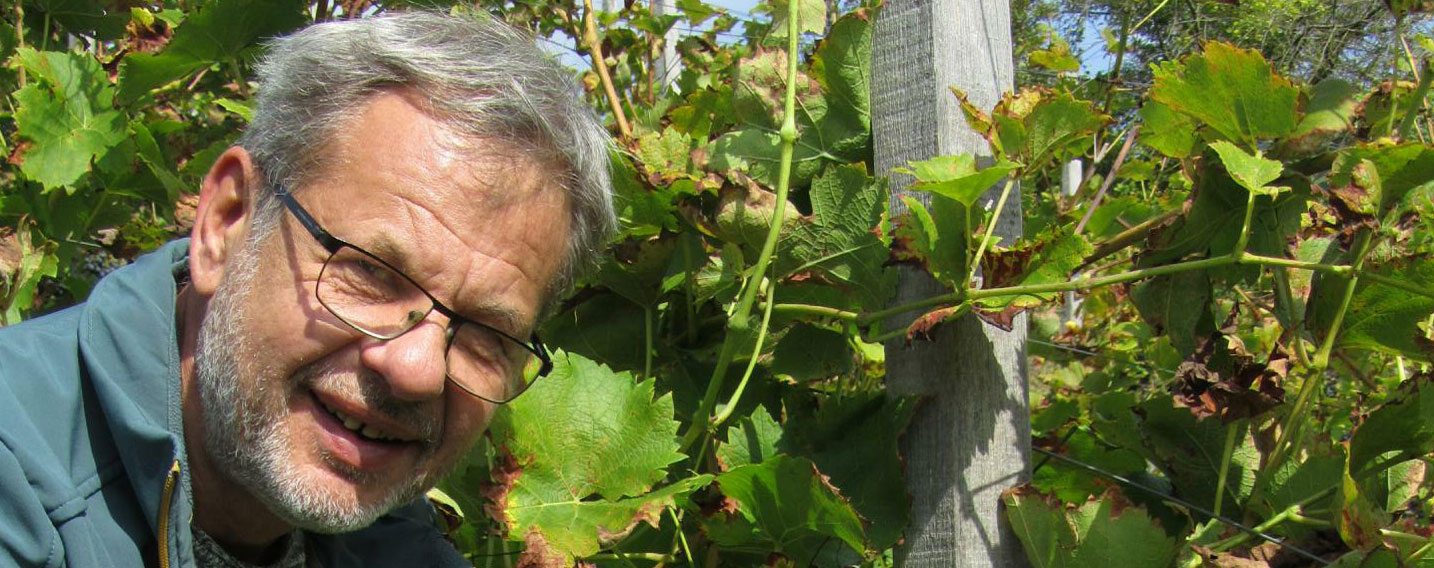










.png)






